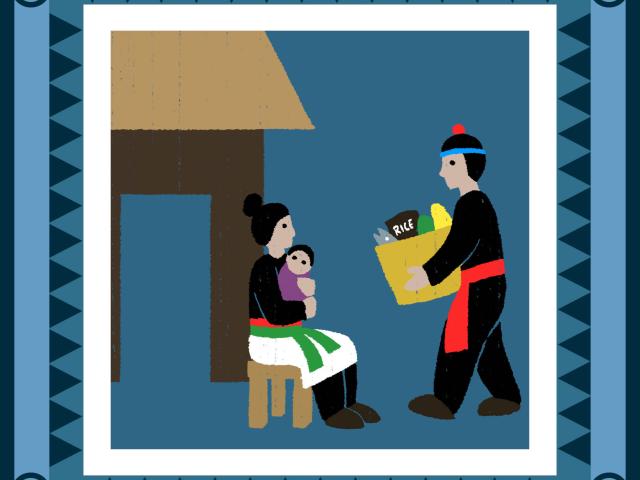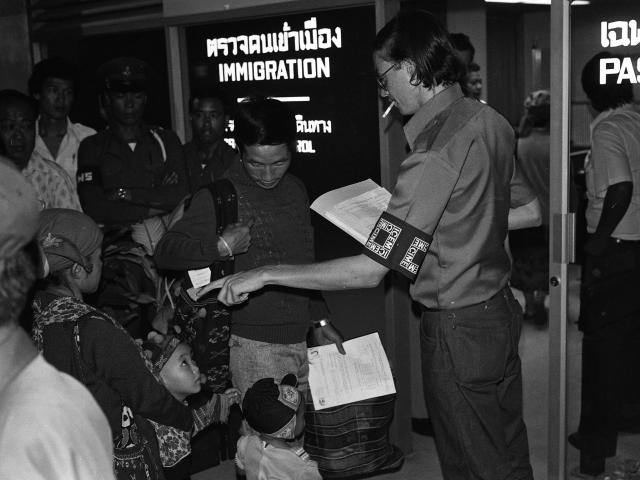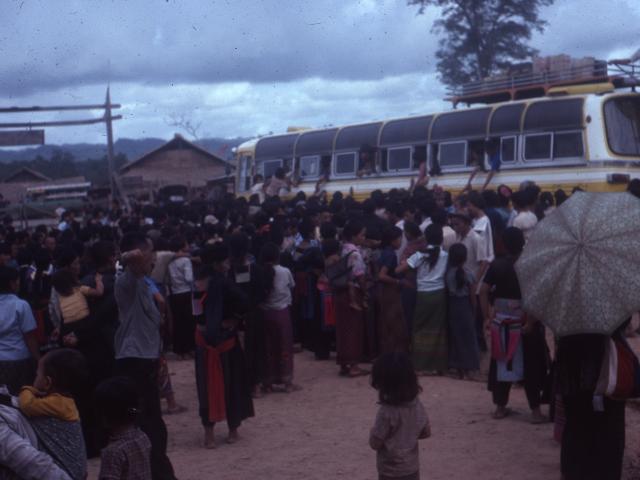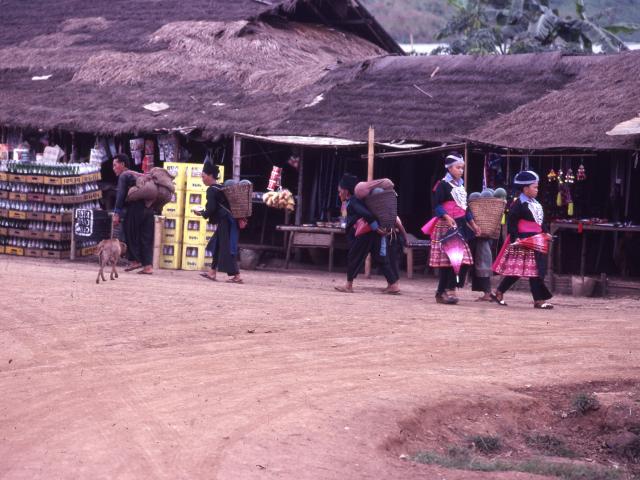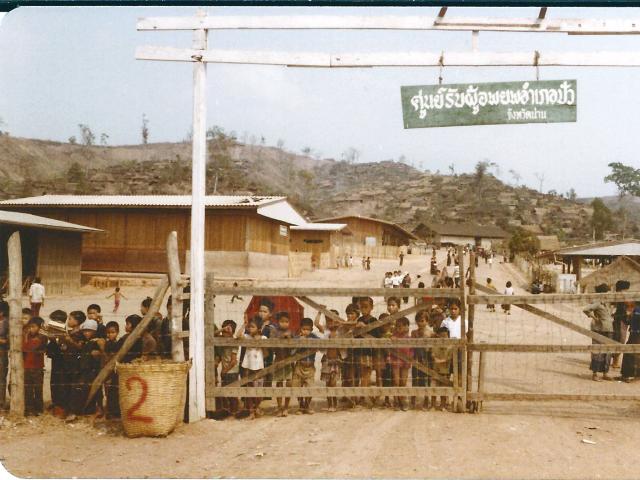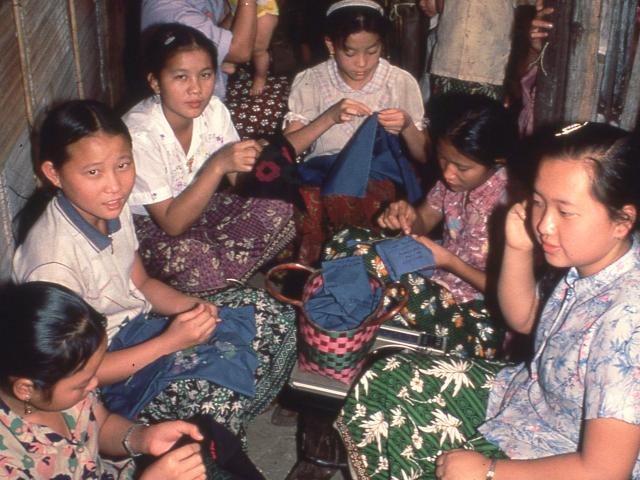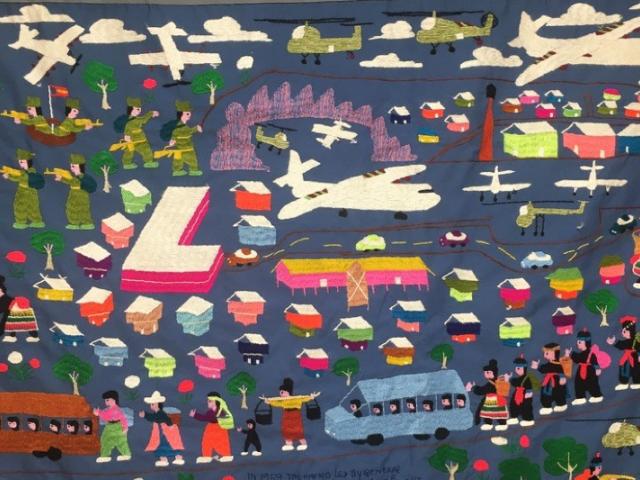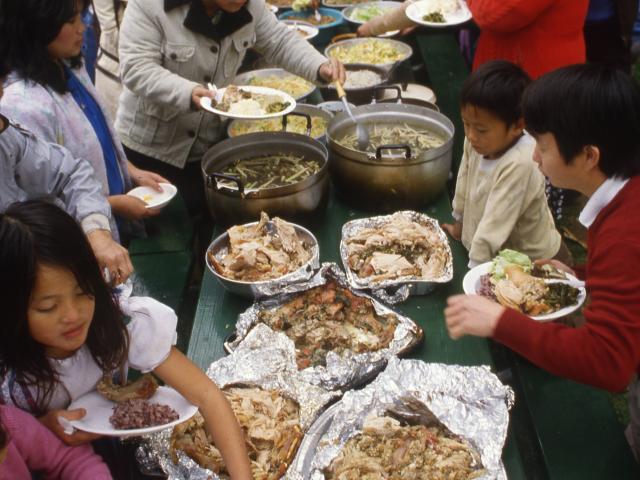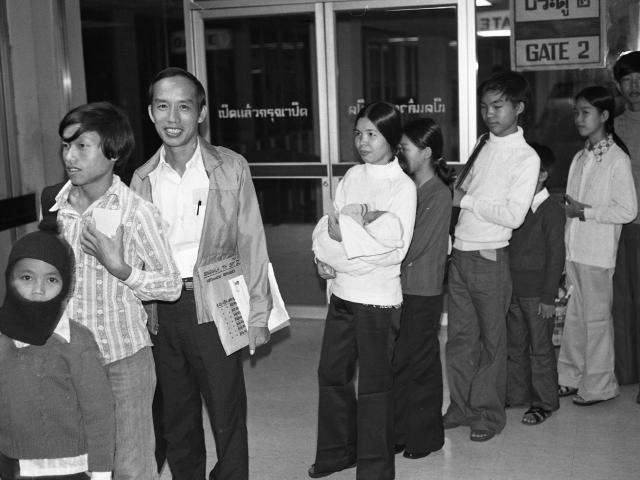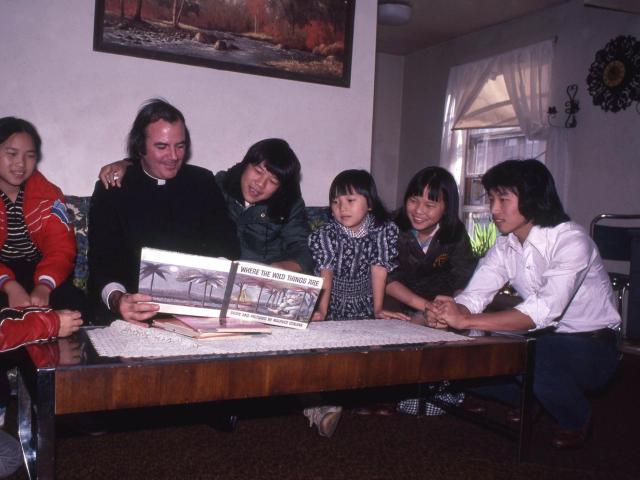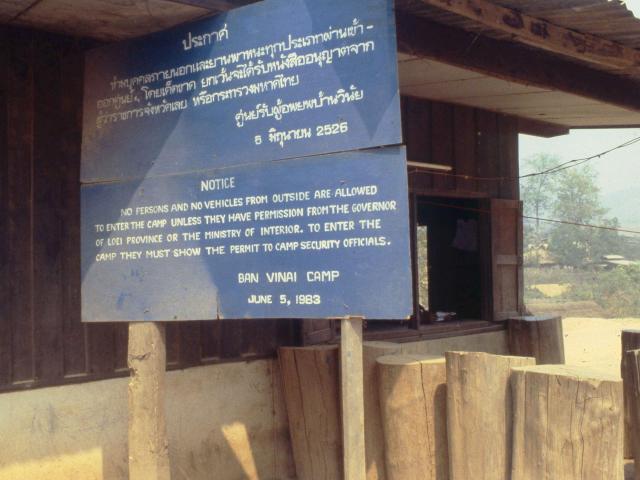Area of Study 3: Hmong Refugee Experiences
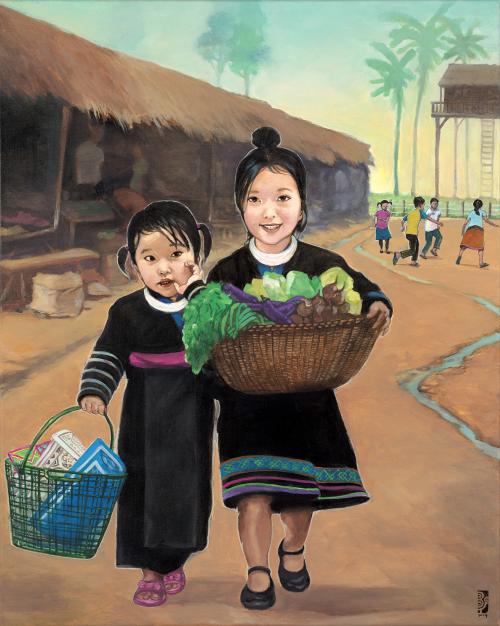
Description of Artwork: Thousands of Hmong families sought refuge in Thailand. This is where paj ntaub (story cloths) transformed from a culturally specific craft to a market good. Hmong women and men began sewing paj ntaub to sell in refugee camps. It was also a way to document their lived experiences on cloth because up until the 1950s, the Hmong language had no written form. Selling paj ntaub became a main source of income for Hmong women who were otherwise restricted from working in the camps. This scene portrays daily activity in a refugee camp - two Hmong sisters selling paj ntaub and carrying vegetables bought from the market. Image credit goes to Boon Ma Yang created specifically for the Hmong History and Cultural Studies Model Curriculum.
Hmong Refugee Experiences
This narrative will introduce educators to the topic of Hmong Refugee Experiences as a diverse range of experiences for Hmong who were forced to leave Laos after the Laotian Civil War or US ‘Secret War’ (1961-1975). It will also explain the temporary shelter they sought in refugee camps and their resettlement in the United States. The contents and concepts in this narrative will provide a strong foundation to support students’ discussion and encourage further learning.
